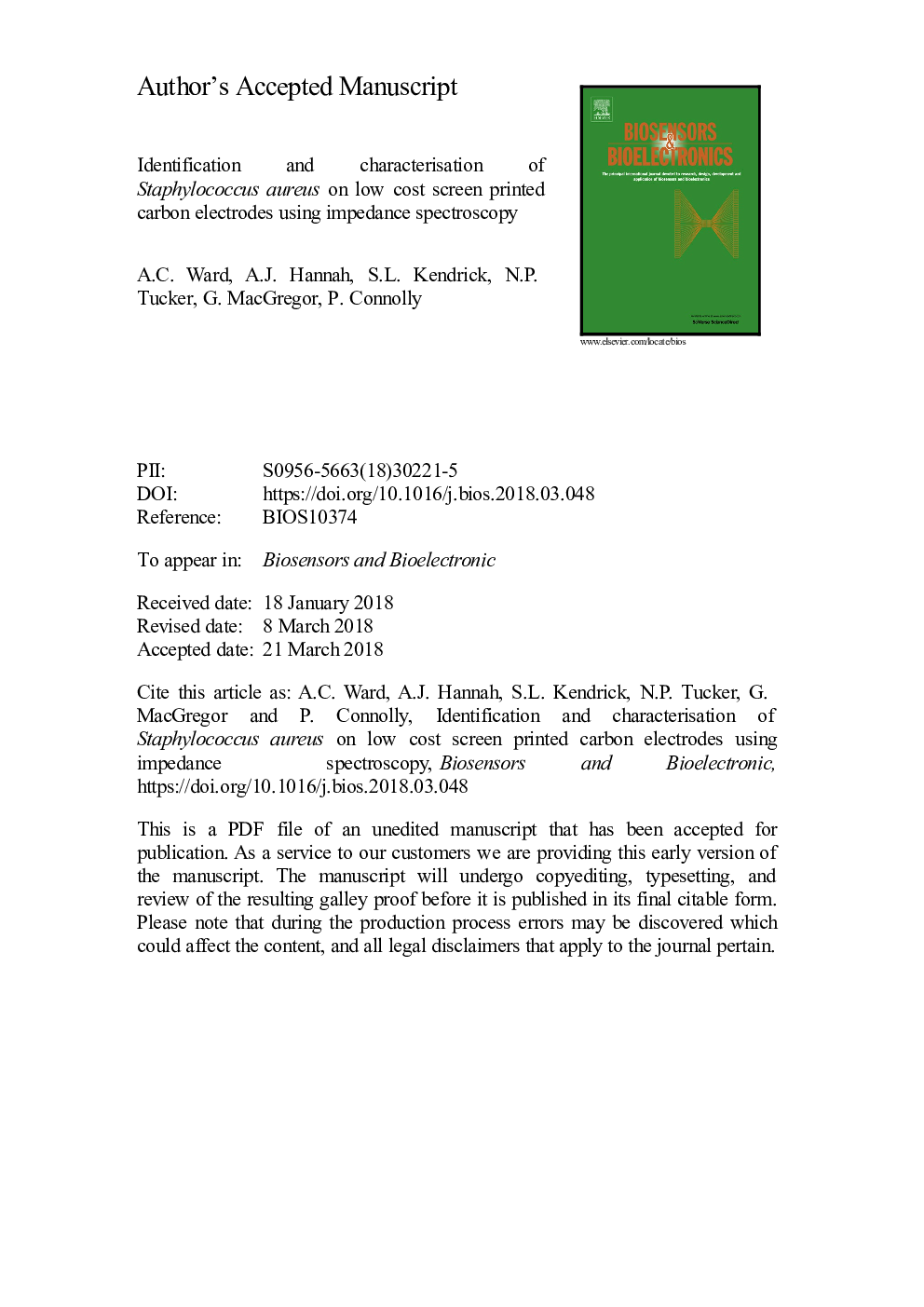| Article ID | Journal | Published Year | Pages | File Type |
|---|---|---|---|---|
| 7229410 | Biosensors and Bioelectronics | 2018 | 14 Pages |
Abstract
Staphylococcus aureus infections are a cause of significant morbidity and mortality, in addition to representing a considerable economic burden. The aim of this study was to explore a low cost screen printed electrode as a sensor for the detection of S. aureus using impedance spectroscopy. S. aureus was incubated in chambers containing the electrodes and the results analysed using a novel normalisation approach. These results show that it is possible to detect the presence of S. aureus in LB media after 30â¯min incubation of a 1% growth culture, in addition to being able to see immediate cell concentration dependant changes in 0.9% NaCl. These observations imply that a number of electrochemical mechanisms cause a change in the impedance as a result of the presence of S. aureus, including adsorption to the electrode surface and the metabolism of the bacteria during growth. The study suggests that this detection approach would be useful in a number of clinical scenarios where S. aureus leads to difficult to treat infections.
Related Topics
Physical Sciences and Engineering
Chemistry
Analytical Chemistry
Authors
A.C. Ward, A.J. Hannah, S.L. Kendrick, N.P. Tucker, G. MacGregor, P. Connolly,
